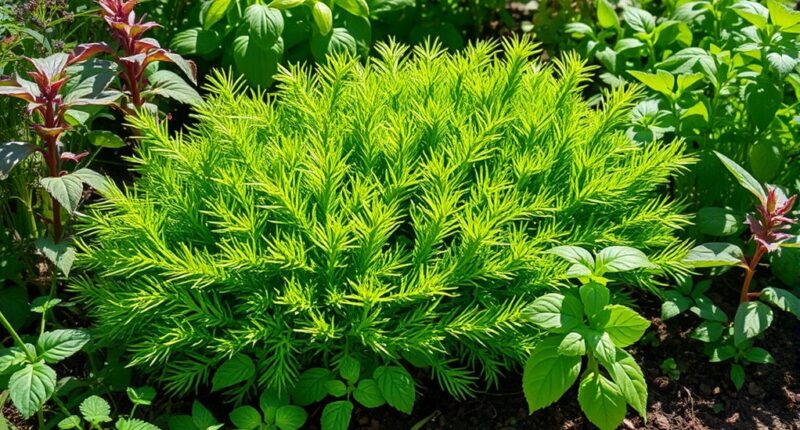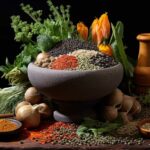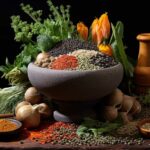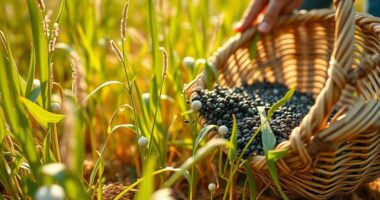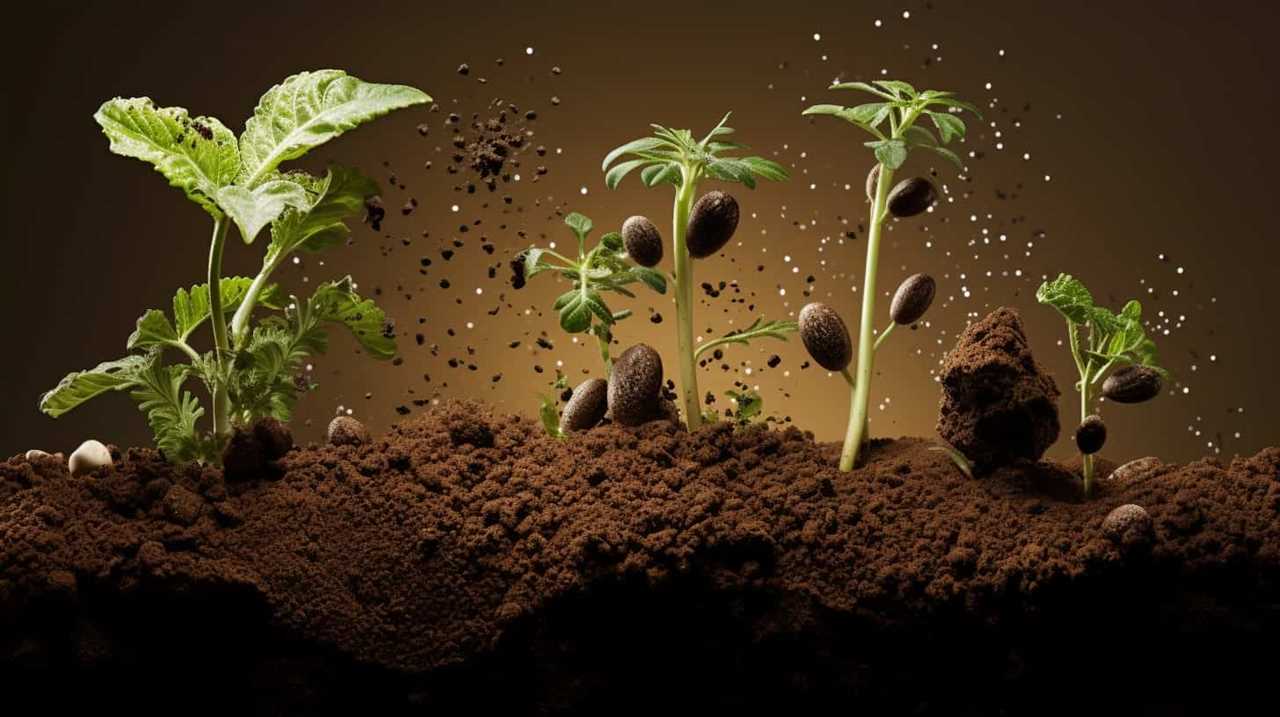For healthy chia growth, plant legumes like beans or peas, marigolds, and aromatic herbs such as basil nearby to boost soil health and repel pests. Avoid fennel, dill, or aggressive plants like squash that may overshadow or compete for nutrients. Choosing compatible companions helps create a balanced ecosystem and minimizes pest issues. To maximize your chia garden’s success, you’ll discover more about effective plant combinations and pitfalls as you explore further options.
Key Takeaways
- Ideal neighbors include legumes, marigolds, and aromatic herbs to enhance soil fertility and deter pests.
- Avoid planting fennel, dill, or aggressive spreaders like squash that may overshadow or compete with chia.
- Use nitrogen-fixing plants to improve soil quality without competing for chia’s nutrients.
- Ensure plants share similar water and soil needs to prevent stress and promote healthy chia growth.
- Utilize technology for real-time garden monitoring to optimize plant placement and prevent pest or nutrient issues.

Companion planting with chia offers a natural way to boost your garden’s health and productivity. When you plant chia alongside certain herbs, vegetables, or flowers, you can create a balanced ecosystem that benefits all your plants. Chia’s roots thrive best in well-draining soil rich in organic matter, so choosing compatible neighbors that improve soil quality or don’t compete for nutrients is essential. For example, legumes like beans or peas are excellent companions because they fix nitrogen in the soil, enhancing fertility without crowding chia’s roots. This soil compatibility ensures your chia plants have the nutrients they need to grow strong and healthy.
Another key benefit of planting chia with the right neighbors is pest prevention. Some plants naturally repel common pests, creating a protective barrier around your chia. Marigolds, for instance, emit a scent that deters nematodes and certain beetles, helping to keep pests away from your chia plants. Similarly, aromatic herbs like basil or mint can confuse or repel pests that might otherwise target chia, reducing the need for chemical interventions. When you strategically pair chia with these pest-repelling plants, you foster a more resilient garden that’s less prone to infestations, saving you time and effort on pest control.
However, it’s equally important to avoid planting chia near certain plants that could compete for resources or attract pests. Strongly aromatic plants like fennel or dill, for example, can sometimes hinder chia’s growth by emitting compounds that interfere with its development. Additionally, plants that require substantially different watering or soil conditions may not be suitable neighbors; chia prefers consistent moisture but doesn’t tolerate overly wet or waterlogged soil. Avoid planting chia close to aggressive spreaders like squash or melons, as they can overshadow or outcompete chia for space and nutrients. Being mindful of these plant relationships helps you maintain a harmonious garden where chia can thrive without unnecessary stress.
Furthermore, integrating AI security concepts such as real-time monitoring and adaptive responses can be applied to garden management, helping you quickly identify and address issues like pests or nutrient deficiencies before they become serious problems.
Frequently Asked Questions
Can Chia Plants Be Grown Indoors With Companion Planting?
You can definitely grow chia plants indoors with companion planting. Indoor cultivation allows you to control light and temperature, creating ideal conditions. Using companion plant benefits, you can pair chia with herbs like basil or mint to promote healthy growth and deter pests. Just make certain your chia gets enough light and space. Avoid overcrowding, and you’ll enjoy a thriving indoor garden that maximizes the benefits of companion planting.
Which Pests Are Naturally Deterred by Companion Planting With Chia?
Imagine you’re in a lush garden, like a botanical battleground. Companion planting with chia acts as pest control by naturally deterring pests like aphids, spider mites, and cabbage worms. Chia’s presence creates a barrier, offering natural deterrents and reducing the need for chemical pesticides. This method helps protect your plants while promoting a healthy ecosystem, making your garden a safer, more resilient space for your vegetables and flowers alike.
How Does Soil Ph Affect Chia’S Companion Planting Success?
Soil pH considerably impacts chia’s companion planting success by affecting soil acidity and nutrient availability. If the soil is too acidic or too alkaline, chia may struggle to absorb essential nutrients, leading to poor growth. To guarantee ideal conditions, test your soil’s pH regularly. Aim for a slightly acidic to neutral pH (6.0-7.0), which supports healthy nutrient uptake and helps chia thrive alongside its companion plants.
Are There Specific Watering Needs for Chia When Companion Planting?
Think of watering as nurturing a delicate dance; consistency keeps chia thriving. You should water chia regularly, keeping soil moisture steady without over-saturating. During companion planting, observe the soil—if it feels dry to the touch, it’s time to water. Maintain a balanced watering frequency to prevent drought stress or root rot, allowing your chia to flourish alongside its plant neighbors and stay vibrant throughout its growing journey.
Can Chia Be Grown Successfully in Container Gardens With Companion Plants?
Yes, you can grow chia successfully in container gardening with companion plants. Focus on choosing plants with similar water and sunlight needs to guarantee compatibility. Container gardening allows you to manage soil quality and watering easily, promoting healthy chia growth. Just make sure your chosen companions don’t compete excessively for nutrients or space, enhancing overall companion compatibility and making your garden more productive and enjoyable.
Conclusion
Now that you know the best neighbors and plants to avoid with chia, you’re ready to create your perfect garden harmony. But beware—there’s one surprising plant that might just turn your chia’s success upside down. Want to find out what it is and how to protect your chia from unexpected setbacks? Keep experimenting, stay observant, and your garden’s secret to a thriving chia crop could be just one clever pairing away. The next move is yours—are you ready?
